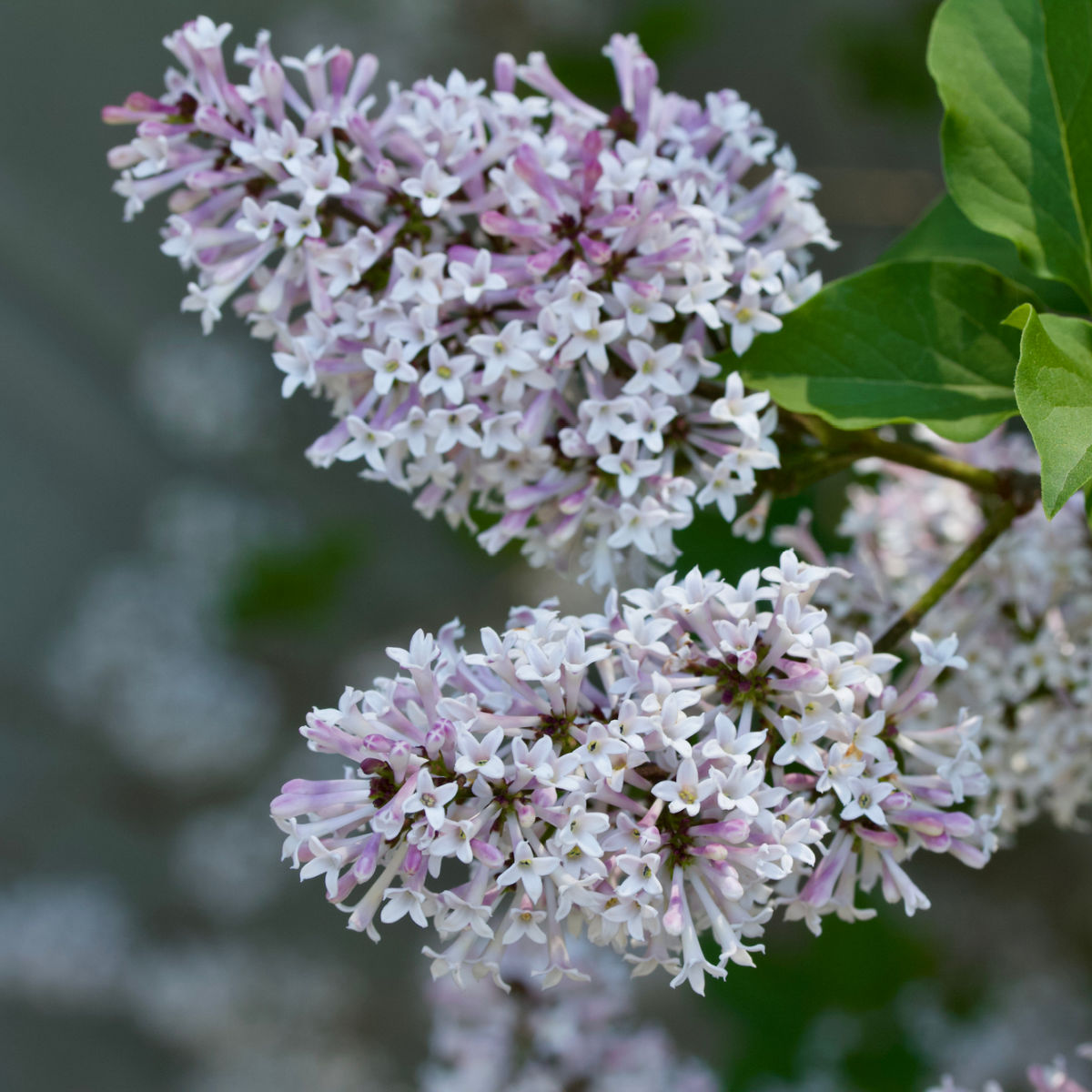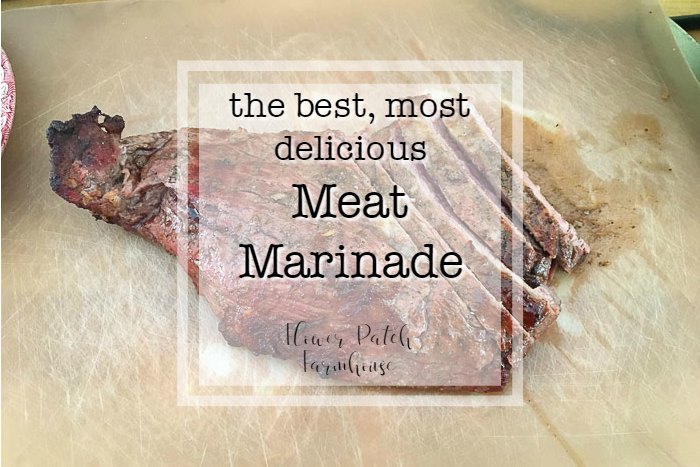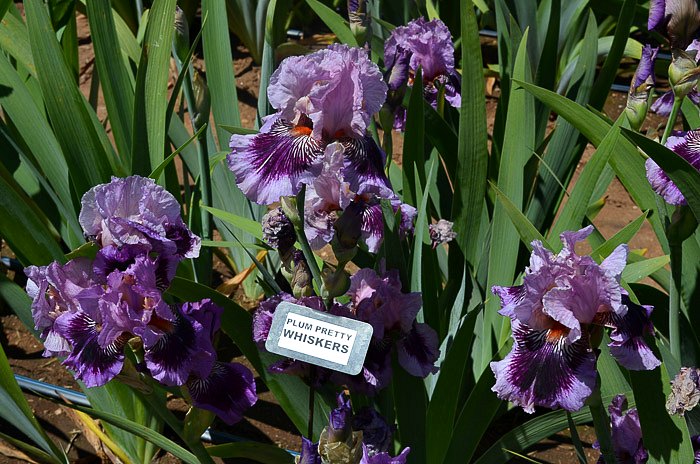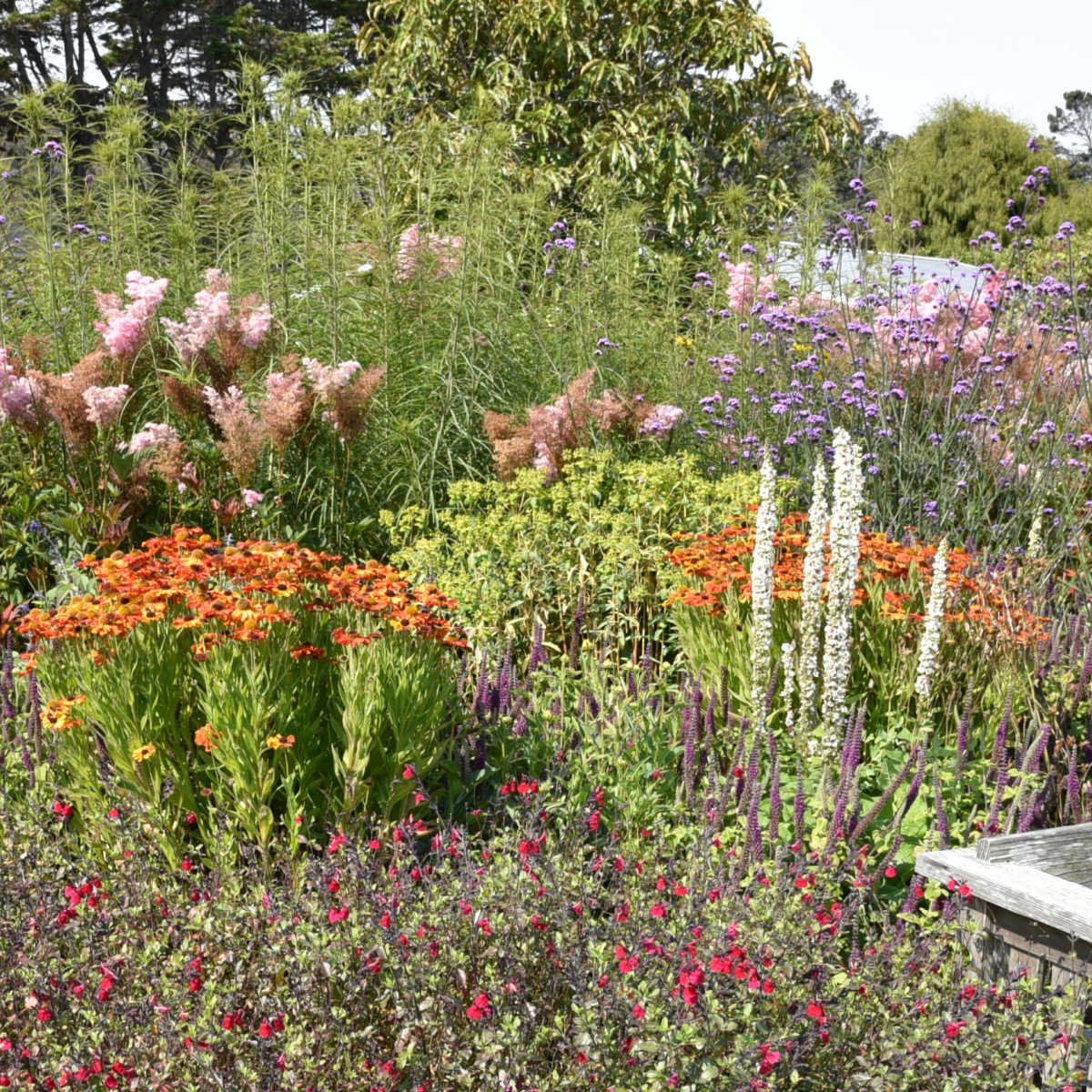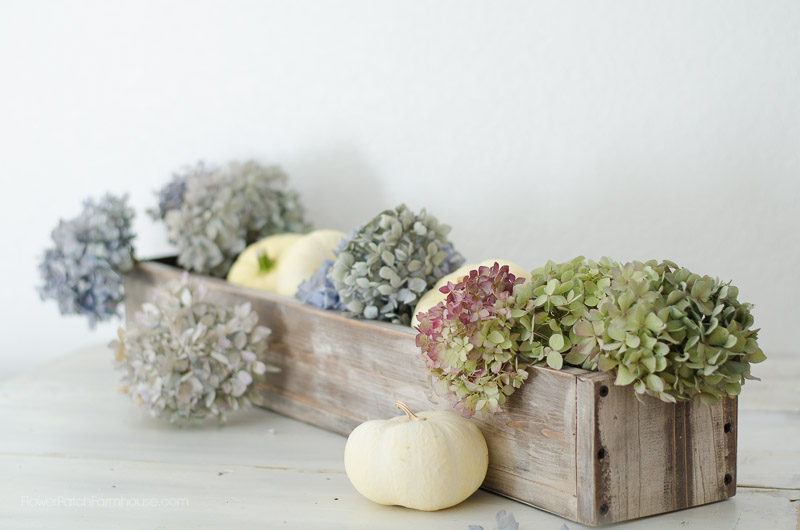Wave Petunias
If you’re looking for fabulous colorful cascading petunias to add to your garden or containers, give Wave Petunias a try.
Wave petunias come in a variety of colors, shapes, and sizes, making them a popular choice for gardeners of all skill levels.
In this blog post, we’ll explore the different types of Wave petunias available and why you should consider adding them to your garden.
Regular petunias (ones that do not spread as far) also have their place in my containers and garden beds.
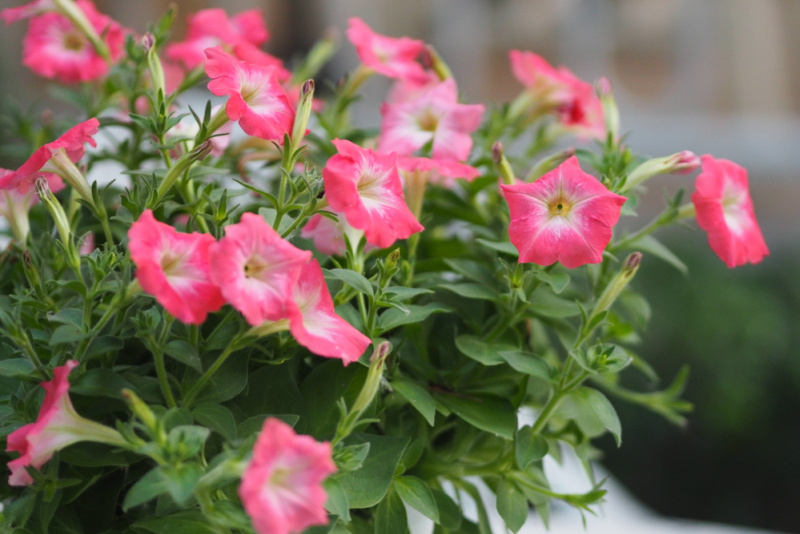
This post contains affiliate links. If you make a purchase after clicking a link I may make a small commission at no added cost to you.
What is a Wave Petunia?
Wave petunias are a type of cascading petunia that was first introduced in the 1990s. They were developed by PanAmerican Seed Company in collaboration with a Japanese company named Kirin Brewery.
They are known for their draping growth habit, which makes them perfect for hanging baskets, window boxes, and other containers.
One thing they are good at is spreading, they can quickly cover a large area. Some can grow up to 4 feet wide and about 2 feet tall.
This makes the ideal as a ground cover in a garden bed or as a dramatic display in a hanging basket or container.
Another great feature they are known for is durability and the ability to grow well in a variety of garden conditions.
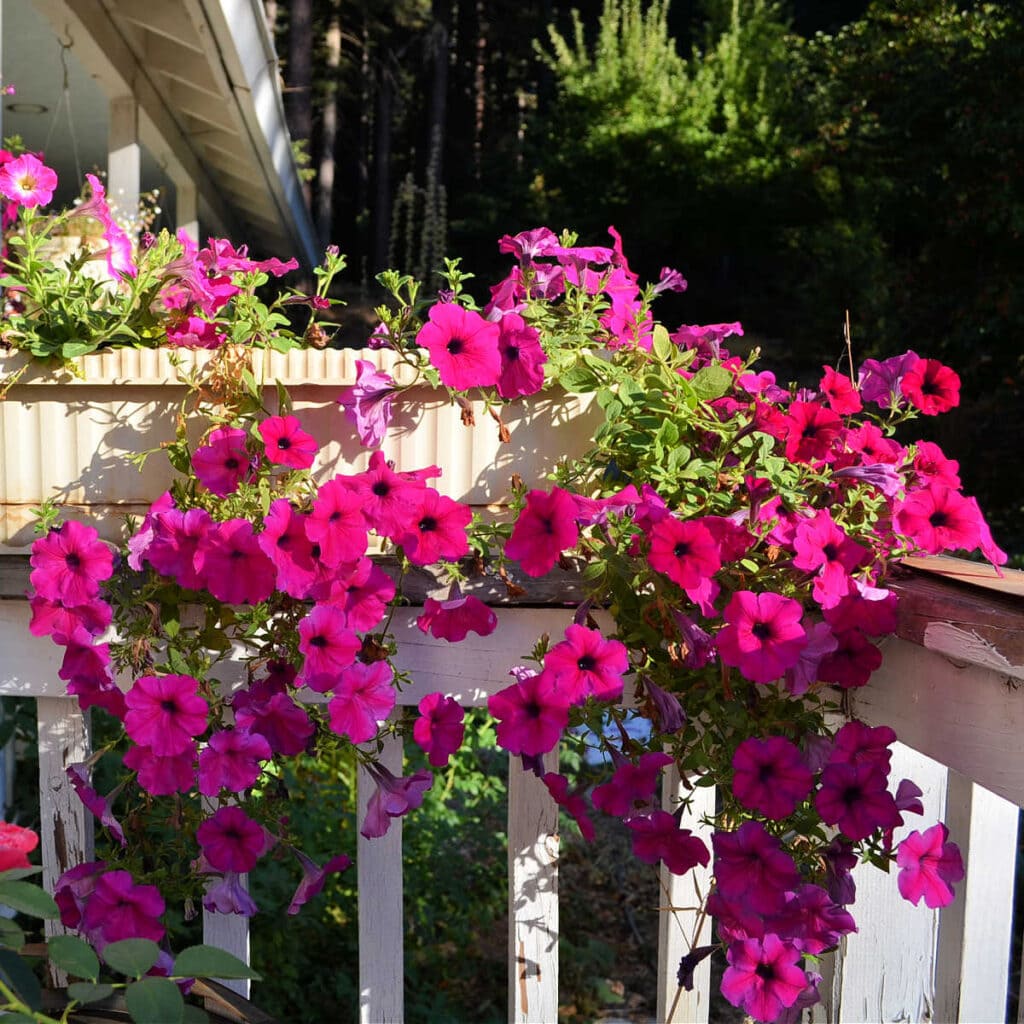
Different Types of Wave Petunias
There are several types of wave petunias available, each with its unique characteristics. Here are some of the most popular varieties:
Easy Wave Petunia
Easy wave petunias are a low-maintenance variety that is perfect for beginners. They are the most versatile, and their growth habit makes them perfect for in the ground, containers, and hanging baskets.
They tolerate heat and cooler night conditions and grow a bit more mounded than the original. (cooler night conditions are what I need, we can get quite cool at night even in summer)
Easy wave petunias come in a variety of colors, including pink, purple, white, and red. There are also some bi-colors.
Tidal Wave Petunia
Tidal wave petunias are known for their large blooms and fast growth rate. They can grow up to 3 feet tall and 4 feet wide, making them perfect for filling in large spaces.
They’re the biggest and most vigorous in the Wave Petunia family with fantastic recovery from rain.
How far they spread and how high they get is determined by how closely plants are spaced – the closer the spacing, the taller the plants.
I grew Tidal Wave Silver and it grew up and over other plants like some tall daisies, a rose, and more. These things are great for growing over a wall you wish to disguise!
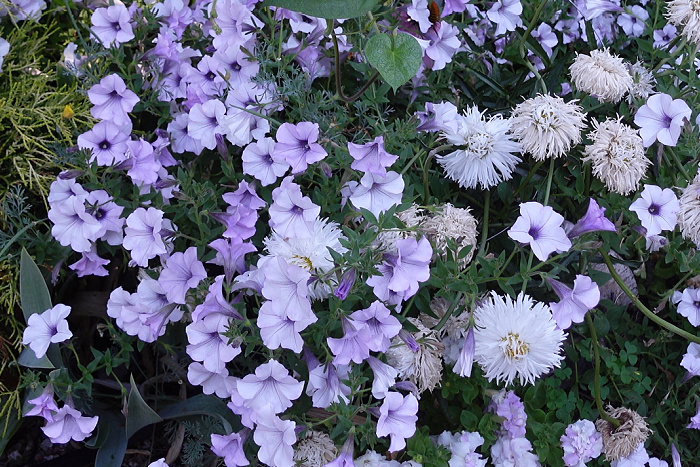
So give this one some space as it can become a monster, in a good way!
Tidal wave petunias are available in several colors, including pink, purple, and silver.
Shock Wave Petunia
Shock wave petunias are a variety that features petite flowers and a more subdued nature.
They spill over the sides of container groupings without overpowering the other plants.
They are smaller than other wave petunias, making them an excellent choice for borders or edging.
Shock wave petunias are perfect for gardeners with a smaller space and come in several decorator color combinations.
This year I am growing Tye Dye and Denim Shockwave petunias. I started them from seed!
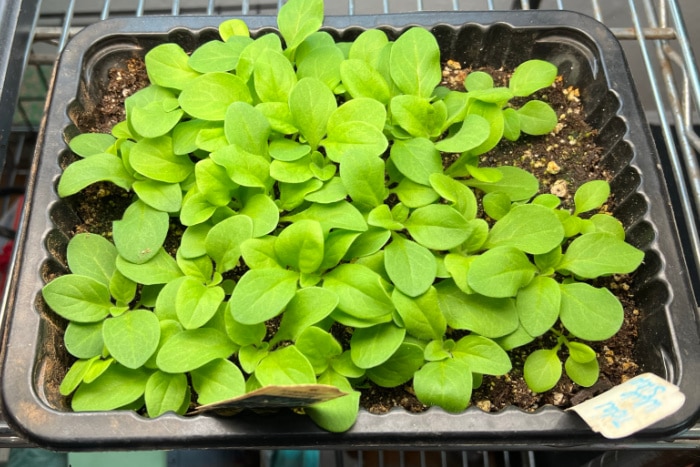
Double Wave Petunias
Double-wave petunias are a type of wave petunia that produces double blooms. They are perfect for adding texture and depth to your garden. Double wave petunias come in several colors, including pink, purple, bi-colors, and red.
Note: Sadly, Wave Petunias stopped carrying the Double Wave but there are other double-flowering petunias available at most garden centers and nurseries.
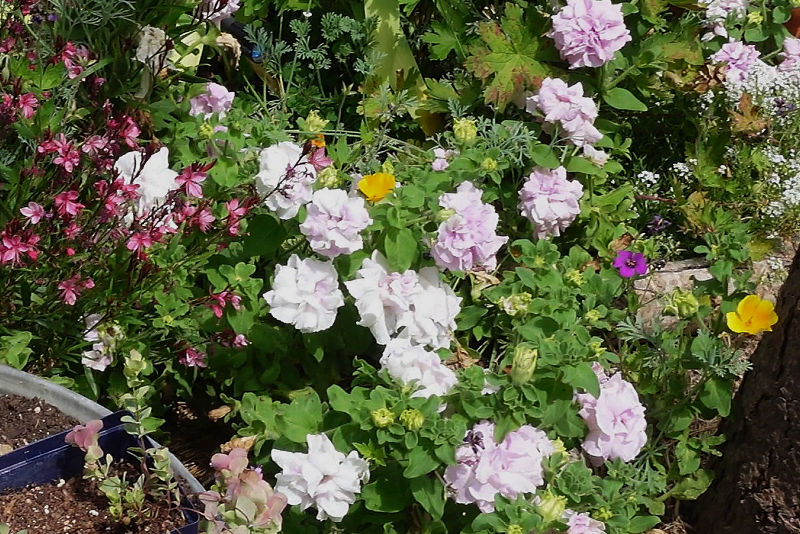
I grew these double petunias from seed and used them as border edging. They did great and it was one plant the gophers left alone!
Wave Velour
Wave velour petunias are a unique variety that features blooms with a velvety texture. They are perfect for adding a pop of color to your garden or containers. Wave velour petunias are also known for their disease resistance, making them a durable choice for your garden.
They are now listed under the Easy Wave category and grow likewise.
How to Care for Wave Petunias
Growing these petunias is easy, even for beginners. Here are some tips to help you get started:
Choose the right location:
Wave petunias do best in full sun, but they can also tolerate partial shade. Make sure the location you choose receives at least six hours of sunlight per day.
Prepare the soil:
Wave petunias prefer well-draining soil that is rich in organic matter. If your soil is heavy or clay-like, you may want to add compost or other organic material to improve drainage and fertility.
Plant your petunias:
If you’re growing wave petunias in containers or hanging baskets, choose a high-quality potting mix that is designed for container gardening.
Use only two or three plants per 12 inch pot. Don’t overcrowd them! Wave petunias do develop a larger root mass and can become root bound if you plant too many together.
If you want to grow cascading petunias that don’t develop as large a root mass then try Supertunias.
If you’re planting them directly in the ground, space them about 12 inches apart and plant them at the same depth as their nursery pots.
Water regularly:
Petunias need regular watering, especially during hot, dry weather. Water them deeply at least once a week.
If they are in containers it will need to be done more often. Actually, the timing will depend on the weather and how fast they dry out.
I like to use a moisture meter, they are inexpensive and can give you an idea of how wet the soil is deeper into the pot.
Fertilize weekly: Wave petunias do require a lot of feeding, they need it as they are pushing out blooms like crazy.
When you plant them in containers using high-quality potting soil it usually has enough good stuff in it to act as a slow-release feed but you may need to add a liquid feed weekly during the height of the growing season.
This is my favorite organic liquid plant food. It feeds not only the plant but also the soil!
If you are using a more economical type of potting soil and are not sure of its nutrient value then adding a cup of worm castings per gallon of soil is recommended.
There are other granular organic feeds you could use also, Espoma Plant Tone, EB Stone Organics, or any good quality you can find at your local nursery.
Why You Want to Grow Wave Petunias
Adaptability
Wave petunias are one of the most adaptable flowers you can grow. They can be grown in containers, hanging baskets, or directly in the ground.
The cascading growth habit of some varieties makes them perfect for covering large areas, while their compact size compatriots make them a great choice for smaller spaces.
Another great cascading petunia is Proven Winners Supertunias, some prefer using the Supertunias to Wave petunias in containers as it is said they won’t develop a large root mass that can get rootbound.
Low Maintenance
Wave petunias are known for their low maintenance requirements.
They are easy to grow and can thrive in a variety of growing conditions. They do best in full sun but will tolerate partial shade.
Note that in partial shade they usually won’t be as productive as in full sun.
They do love consistent watering as needed, (depending on the climate) and regular feeding.
They are heavy feeders as producing so many blooms uses up nutrients quickly!
Colorful
One of the most significant benefits of growing wave petunias is their color. They come in a wide range of colors, including pink, purple, white, and red.
You can mix and match different colors to create a vibrant and eye-catching garden or container display.
Their colorful blooms can last from spring through fall, providing a long-lasting source of beauty in your garden.
Disease Resistance
Wave petunias are known for their disease resistance, which means they are less likely to be affected by common garden diseases.
This makes them a durable choice for gardens across the country, and you can enjoy their blooms without worrying about disease or pest problems.
Budworm is an issue for all petunias, if you need to, then using an organic BT spray weekly can keep the budworms at bay.
Attract Pollinators
Wave petunias are also known for attracting pollinators like bees and butterflies.
By planting these petunias in your garden, you can help support local pollinator populations and create a more vibrant and diverse ecosystem in your backyard.
By choosing the right variety and following these tips for growing wave petunias, you can enjoy their vibrant blooms and add a touch of beauty to your backyard.
Wave Petunias vs Supertunias
Some ask if Wave Petunias are better than Proven Winners Supertunias. That is a valid question and opinions vary.
In my garden, the Wave Petunias do better earlier in the season while the Supertunias start putting on the show in August.
When my Wave petunias start to look a bit tired the Supertunias are starting their grand show, so I enjoy growing them both.
It is most likely because of our cool summer nights. My friend, who lives in an area with warmer nighttime temperatures, does great with Supertunias from Spring until the first frost!
Another thing I love about Wave Petunias is I can grow them from seed and many times they will reseed around the garden. Finding little petunia sprouts the next season is just fun.
